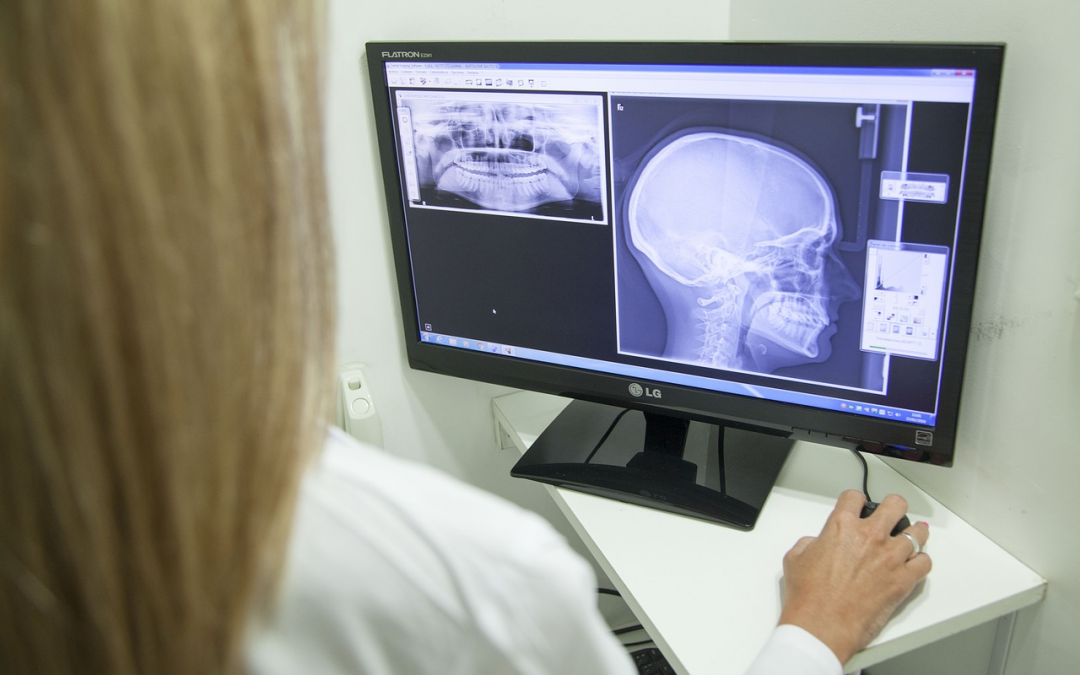If you have been experiencing continuous pain around your jaw or discomfort while eating, then you might be suffering from Temporomandibular Joint Disorder (TMJ). While a first instinct might be popping some painkillers, it wouldn’t solve the root cause of the issue and the pain would return as soon as the painkillers wear off.
Instead, chiropractors can help you resolve the Temporomandibular joint issues permanently, without any kind of surgery or medication.

What Is Temporomandibular Joint (TMJ) Disorder?
The Temporomandibular joint connects the lower jaw to the skull-part in the front of the ear. You have two TMJs, one on each side of the jaw.
Controlled by the TMJ, the jawbone has two different types of movements: rotation/ hinge action and gliding action. The hinge actions helps in opening and closing the mouth, and the gliding action helps open the mouth as wide as possible.
The combination of these two actions help you talk, chew, and yawn. Placing your fingers right in front of your ears and opening your mouth will allow you to feel the joint and its movement.
Issues in the areas around the TMJ can lead to ear pain, facial pain, headache, and neck pain. It can also lead to problems with eating; you may even experience your jaw popping or clicking when you bite.
What are the causes behind TMJ Disorder?
- Trauma: A punch or an accidental impact to the jaw can cause dislocation of the TMJ. Some patients report temporary pain around the TMJ after getting dental work done since they have to keep their jaw joint open for extended periods of time.
- Bruxism: The habit of grinding teeth continuously can result in muscle spasm, inflammation, and pain. People who have a habit of grinding teeth persistently are more prone to suffer from TMJ disorder. Clenching your jaw for long periods of time also cause pain in the TMJ.
- Osteoarthritis: Just like all the other joints in the body, the jaw joint can also be affected by arthritis which can in turn lead to issues with the TMJ. It usually occurs due to the normal aging process.
- Cartilage destruction: While cartilage destruction is more common in knees, it can also affect the jaw joint and lead to TMJ disorder
- Cervical Spondylosis: People suffering from cervical spondylosis experience pain, inflammation, and stiffness in the neck as well as the shoulder area. This pain can also expand to the jaw area and make it more prone to developing a TMJ disorder.

What are the symptoms of TMJ disorder?
- Pain around the jaw joints and facial muscles that radiates to the neck and/or shoulders
- Overstretched joints that might be causing muscle spasms
- Pain while chewing, yawning, or eating
- Frequent headaches and dizziness which can potentially lead to nausea or vomiting
- Ear pain, ringing of ears, and loss in hearing
- Swelling around the mouth and face
- Inability to fully open the jaw
- Muscle spasms around the jaw joint which might make it difficult to eat or swallow food
- Poor arrangement of teeth in the mouth or stress
How can a chiropractor help in dealing with TMJ disorder?
By using trigger point therapy to loosen joints and tight muscles surrounding the spine and jaw, chiropractors lawrenceville can help ease the pain associated with the TMJ. A trigger point is a sensitive area in a muscle that often feels like a knot and may cause a painful sensation when pressure is applied to it. The Trapezius, the flat triangular muscle located over the upper back and extending over the neck, is a trigger point common to TMJ. Manipulating it using trigger point therapy can relieve tension in the areas at the temple and jaw bone.
Adjustments to the joints done by hand cause a minor stretch inside the joint which disintegrates any scar tissue or fibrous attachments created by the body due to previous injury or trauma.
Most people that have a TMJ disorder need continual care and assistance in order to permanently deal with the pain and side effects. That is not the case for everyone though as of trigger point therapy often allows patients to experience an increase in joint mobility after just one session!
Chiropractors usually start by understanding your symptoms and issues in order to find the root cause behind TMJ, and then they suggest the right treatment plan to move forward. The idea is to treat the root cause instead of just the symptoms to ensure that TMJ disorder is completely rectified with no future occurrences. For instance, if cervical spondylosis is the reason for the TMJ disorder, then the chiropractor can make gentle spinal corrections in order to return the spine to its normal position and in turn resolve the TMJ disorder.
Final words
Chiropractic sessions provide the perfect way for dealing with TMJ in a non-invasive manner without any unnecessary medication.
Call us at 678-505-0000 and visit us at one of our locations in Lawrenceville, Marietta, Morrow or Midtown. Mention you read our blog article to receive a free appointment!



Recent Comments